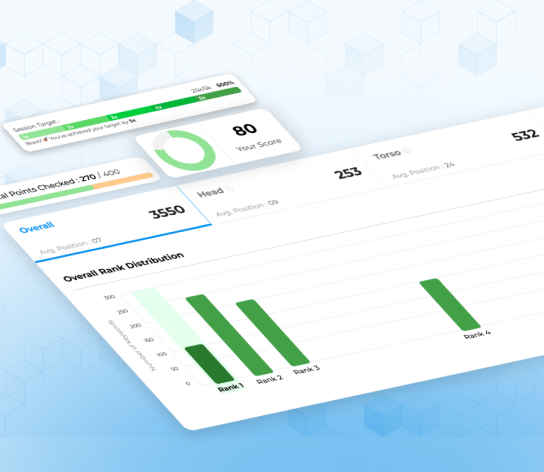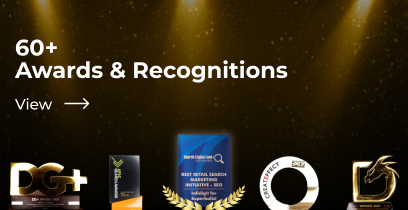The Ultimate Guide to Pest Control SEO
Strategies
Want more organic traffic on your website?
Introduction to Pest Control SEO
In the competitive landscape of pest control services, effective SEO strategies are essential for visibility and growth. With approximately 98% of users selecting businesses from the first page of search results (Linked.in), mastering local SEO can significantly enhance your company’s reach and customer acquisition.
This guide will explore proven techniques tailored specifically for pest control companies, focusing on On-Page SEO, Off-Page SEO, Technical SEO, Local SEO, Content Marketing. By implementing these strategies, you can improve your search engine rankings, attract more qualified leads, and ultimately increase your business revenue. Let’s embark on this journey to unlock the full potential of your pest control SEO efforts.

Importance of Online Visibility and Customer Engagement for Pest Control Businesses
Whether you are running a small business or a massive company, data-backed SEO strategies are known to increase website visibility. Online visibility refers to how easily potential customers can find your pest control business through search engines and online platforms. Similarly, customer engagement involves interacting with your audience through various channels, strengthening relationships, and building trust.
Both online visibility and customer engagement are critical for your business growth. High visibility ensures that your business appears prominently in search results, driving targeted traffic and generating quality leads for your Pest Control Service.
Likewise, effective engagement helps build brand awareness, enhancing your reputation and setting you apart from competitors. According to a study, 72% of consumers say that positive reviews make them trust a business more and that they are more likely to make a purchase. (SEO Site Checkup)
By actively managing your online presence and engaging with customers, you can improve your market position, attract more clients, and strengthen your brand’s credibility. This comprehensive approach ultimately supports sustained growth and a competitive edge in the pest control industry.
Analyzing Top Competitors in Pest Control SEO
One way to ensure your pest control SEO efforts work for you would be to understand your competitors. You will need to start with identification, followed by a thorough analysis of their strategy. This can be achieved by working with a top SEO agency.
You will also need to perform different individual competitor analysis tasks, such as keyword analysis, content analysis, backlink analysis, technical analysis, etc.
Examining Competitors' Keyword Strategies
To thoroughly examine your competitors’ keyword strategies, start by utilizing advanced tools like SEMrush, Ahrefs, or Google Keyword Planner. These tools help uncover the specific keywords your competitors are targeting and reveal their search intent.
Analyze how these Pest Control Businesses keywords are integrated into various elements of their websites, such as titles, meta descriptions, headings, and body content. After that, look for gaps in their keyword coverage—identifying keywords they are missing or underutilizing can present opportunities for your own SEO strategy.
Additionally, assess the effectiveness of their keyword use by evaluating their rankings and engagement metrics. This detailed analysis allows you to refine your keyword strategy, capitalize on overlooked opportunities, and enhance your competitive edge.
Evaluating Competitors' Content Approaches
To effectively evaluate your competitors’ content approaches, start by identifying the types of content they use, such as blog posts, articles, infographics, videos, case studies, e-books, or whitepapers.
Examine how frequently they publish this content and its alignment with their target audience’s interests. Assess the quality and depth of their content, noting any unique angles or value propositions they offer. Similarly, analyze engagement metrics such as social shares, comments, and backlinks to gauge content effectiveness.
This insight helps you understand successful content strategies, identify gaps, and refine your own content approach for better audience engagement and SEO performance.
Assessing Competitors' Backlink Profiles
To assess your competitors’ backlink profiles, start by examining the total number of backlinks directed to their Pest Control websites. Use tools like Ahrefs or SEMrush to identify the types of backlinks they use, such as social bookmarking, blog posting, and infographic backlinks.
Evaluate the authority and trustworthiness of the domains linking to your competitors by checking their domain authority and relevance. Focus on high-authority links from reputable sources, as they can significantly impact SEO performance.
On top of that, identify any patterns or strategies in their backlink acquisition that might be leveraged for your own SEO efforts. This analysis helps you understand their link-building success and find opportunities to enhance your own backlink strategy.
Identifying SEO Tactics Used By Competitors
After identifying the on-page and off-page strategies of your competitors, follow up by analyzing their technical practices. Evaluating the on-page elements will let us know their keyword usage, content quality, and meta tags. Similarly, after reviewing their off-page strategies, we will get to know about their backlink sources and online reviews.
The final tactic is to examine technical SEO aspects like site speed, mobile responsiveness, and structured data implementation. Tools such as SEMrush and Ahrefs can provide insights into their strategies and performance.
Understanding these tactics helps you gauge their strengths and weaknesses, allowing you to refine your own SEO approach for better competitive positioning.
Best Practices for On-Page SEO in the Pest Control Industry
On-page SEO focuses on optimizing the website’s content to provide information to readers and crawl on search engines. This can be done through content optimization activities. This includes ensuring sufficient use of keywords to appropriate tagging of titles, descriptions, headers, images, and more.
Importance of Keywords and Content Quality
Keyword relevance ensures your content aligns with what users are searching for, driving targeted traffic to your site. Original content sets your pest control business apart by providing unique, valuable insights that engage readers and build authority.
For instance, using specific keywords like “termite control” or “bed bug removal” can attract targeted traffic to your site,
Continuous optimization is also crucial to maintain relevance and improve rankings over time. Regularly updating content and keywords based on performance data helps keep your site competitive and responsive to evolving search trends and user needs. Balancing these elements enhances your SEO effectiveness and online visibility.
Crafting Effective URLs, Meta Titles, and Descriptions
Creating effective meta titles, descriptions, and URLs involves relevant keywords to enhance search visibility. Ensure each element clearly reflects the page’s content and user intent, encouraging clicks through compelling language.
- URLs must be straightforward and include keywords to improve SEO.
- Titles should ideally be under 60 characters.
- Descriptions should be engaging and within 160 characters.
This approach not only boosts search engine rankings but also improves click-through rates by aligning with users’ search queries and expectations.
Optimizing Headers and Subheaders for Your Pest Control Website
Effective header optimization involves using a hierarchy of headings (H1-H6) to structure content clearly and logically. Ensure each header and subheader is relevant, descriptive, and directly related to the content it leads to.
Avoid overusing or inconsistently applying keywords; instead, focus on natural, user-friendly language that enhances readability and SEO. Properly optimized headers not only improve search engine rankings but also facilitate a better user experience by guiding visitors through your content seamlessly.
Enhancing Image Optimization and Internal Links
Optimize images by ensuring they are appropriately sized for faster loading times, and use descriptive, keyword-rich filenames and alt text for better search engine indexing. Here is an example:
For an image of a technician inspecting a home, use: “Pest control technician inspecting for termites in a residential basement.“
Ensure that internal links are contextually relevant, guiding users to related content within your site.
These links should be clickable and enhance user navigation while reinforcing the site’s overall structure and relevance. Proper image and link optimization improves SEO performance and provides a better user experience by facilitating easier content discovery.
Off-Page SEO Strategies for Pest Control Companies
Off-page SEO strategies for pest control companies focus on building authority and improving rankings through external efforts. These include acquiring high-quality backlinks and earning positive online reviews. Implementing these tactics boosts visibility and drives targeted traffic to your site.
Building High-Quality Backlinks
To build high-quality backlinks, prioritize acquiring links from reputable and relevant websites with high domain authority. Such backlinks enhance your site’s credibility and search engine ranking.
Avoid paid links, as they can lead to penalties from search engines and undermine your SEO efforts. Instead, focus on organic strategies like guest blogging, creating shareable content, and forming strategic partnerships to naturally attract authoritative backlinks. This approach ensures sustainable SEO growth and strengthens your online presence.
Utilizing Online Reviews and Testimonials for SEO
Leverage online reviews and testimonials to boost your SEO by actively asking feedback from customers and analyzing their responses to identify areas for improvement.
As mentioned earlier, 72% of consumers say that positive reviews make them trust a business more and that they are more likely to make a purchase (SEO Site Checkup).
Use follow-up with reviews and engage with feedback to enhance customer satisfaction. Showcase positive reviews prominently on your website and social media platforms to build trust and attract more customers.
High-quality testimonials not only improve credibility but also contribute to higher search engine rankings through fresh, user-generated content.
Technical SEO for Pest Control Websites
Technical SEO for pest control websites involves optimizing site speed, mobile-friendliness, and structured data to improve search rankings. Fast-loading sites are crucial since 53% of mobile users abandon sites that take longer than three seconds to load(Oberlo).
Optimizing your Pest Control Site’s Speed
Improving your pest control website’s speed is crucial for SEO and user experience. Here are some key tips:
- Compress files to reduce file size without compromising quality
- Optimize images by using the right file types and sizes
- Minimize redirects as each one decreases page speed
- Clear browser cache regularly to prevent slowdowns
- Enable compression on CSS, HTML, and JavaScript files over 150 bytes
These steps collectively improve page loading speeds, leading to a better user experience and potentially higher search engine rankings.
Mobile Responsiveness and User Experience
Ensure your pest control website adopts a mobile-first design approach to prioritize mobile usability. Implement touch-friendly elements and flexible layouts that adapt seamlessly to various screen sizes.
This not only enhances user experience but also aligns with Google’s mobile-first indexing, improving your search engine rankings. Prioritizing mobile responsiveness ensures that visitors on smartphones and tablets can easily navigate and interact with your site.
Implementing Schema Markup on your Pest Control Website
Incorporate schema markup to enhance your pest control website’s search engine visibility. Use schema types such as:
- BlogPosting to optimize your articles
- FAQs for structured responses
- ReviewRating to display customer feedback effectively
- LocalBusiness schema to improve local search results and provide essential business details.
This structured data helps search engines understand your content better, potentially leading to richer search results and improved online presence.
Local SEO Tactics to Dominate Pest Control Searches
Pest control companies operate locally. Hence, they must use localized keywords. Localized keywords and location-based targeting can help attract more leads and generate higher revenue.
Optimizing Your Google My Business Profile
Google My Business (GMB) is vital in local search and SEO. Optimize and integrate it into your pest control SEO strategy to enhance online visibility and connect with potential customers directly.
Ensure your Google My Business profile is fully completed and up-to-date. Include accurate business information such as address, phone number, and operating hours. Add high-quality images and encourage customer reviews to enhance credibility.
Utilize features like posts and Q&A to engage with customers and provide timely updates. Regularly monitor and update your profile to reflect changes, helping improve local search visibility and attract more clients.
Local Citations and NAP Consistency
Maintaining accurate and consistent local citations is crucial for local SEO. Ensure your Name, Address, and Phone Number (NAP) are identical across all online directories and local listings.
Regularly audit and update citations to correct any discrepancies, which helps improve local search rankings and enhances business credibility. Address any inconsistencies promptly to avoid confusing potential customers and to strengthen your local online presence.
Encouraging and Managing Local Reviews
To enhance your online reputation, actively encourage satisfied customers to leave reviews. Regularly analyze the reviews to gain insights into customer experiences and identify areas for improvement. Share positive feedback to build trust with potential clients and address negative reviews professionally to demonstrate your commitment to customer satisfaction.
Content Marketing Strategies for Pest Control SEO
Content marketing strategies for pest control SEO focus on creating valuable, relevant content that addresses customer pain points. For example, 72% of marketers say content marketing increases engagement and leads. Blogs on pest prevention tips or seasonal pest issues can boost search rankings and attract targeted traffic (Oberlo).
Creating Valuable Content for Pest Control Audiences
To engage your audience effectively, focus on producing high-quality content that demonstrates Expertise, Experience, Authority, and Trustworthiness (EEAT).
Develop informative blogs, detailed articles, and practical guides that address common pest control concerns and offer actionable solutions. Ensure your content is well-researched and relevant, providing real value to readers while establishing your business as a credible authority in the pest control industry.
Leveraging Case Studies and Success Stories
Utilize case studies and success stories to showcase your proven track record and build credibility. Highlight specific examples of past pest control projects where you achieved significant results or solved complex issues.
Detail the challenges faced, solutions implemented, and the positive outcomes for clients. This approach not only demonstrates your expertise but also builds trust with potential customers by providing tangible evidence of your capabilities and past successes.
Social Media’s Role in Pest Control SEO
Using social media in your pest control SEO strategy can give your business a boost and affect its growth positively. Start posting quality content to engage the target audience and build a relationship with them.
Enhancing Brand Visibility Through Social Media Channels
To boost brand visibility, select social media platforms that align with your target audience’s preferences, such as Facebook, Instagram, or LinkedIn. Develop a content strategy that includes both educational and entertaining posts to engage users and showcase your expertise in pest control.
Share tips, industry news, and success stories while incorporating visuals and interactive elements to attract and retain followers. This approach helps build brand recognition and fosters a stronger connection with your audience.
Creating Shareable Content for building engagement
Connecting to that, to drive engagement, focus on creating content that resonates with current trends and leverages storytelling techniques. Craft content that is relevant to your audience’s interests and needs, offering value through informative, entertaining, or emotionally compelling narratives.
Include visuals and interactive elements to enhance shareability. By aligning with trending topics and presenting content in an engaging manner, you increase the likelihood of your content being shared, thus amplifying your reach and interaction.
FAQs on Pest Control SEO
1. What is Pest Control SEO?
Pest Control SEO (Search Engine Optimization) is the process of optimizing a pest control business’s online presence to improve its visibility on search engines like Google. It involves strategies like targeting relevant keywords, creating local content, optimizing Google My Business profiles, and earning backlinks to attract more organic traffic and generate leads. Effective Pest Control SEO helps your business rank higher in local search results, making it easier for potential customers to find your services.
2. What are the key elements of a successful pest control SEO strategy?
The key elements of a successful pest control SEO strategy include targeted keyword research, high-quality content creation, and local SEO optimization. These elements work together to improve visibility, attract relevant traffic, and enhance local search rankings.
3. How can local SEO specifically benefit pest control companies in the US?
Local SEO benefits pest control companies in the US by improving their visibility in local search results, driving targeted traffic from nearby customers, and enhancing their presence in Google Maps and local directories.
4. Why is content marketing crucial for SEO in the pest control industry?
Content marketing is crucial for SEO in the pest control industry because it helps build authority, attract and engage potential customers, and provide valuable information that addresses their needs.
5. How can social media contribute to the online presence of pest control businesses?
Social media enhances the online presence of pest control businesses by increasing brand visibility, engaging with potential customers, and driving traffic to their websites through targeted content and interactions.
6. What are the benefits of Outsourcing SEO for Pest Control?
Outsourcing SEO for pest control offers access to specialized expertise, up-to-date industry knowledge, and dedicated resources, leading to more effective strategies and improved search engine rankings.
Our Solutions
How useful was this post?
0 / 5. 0









